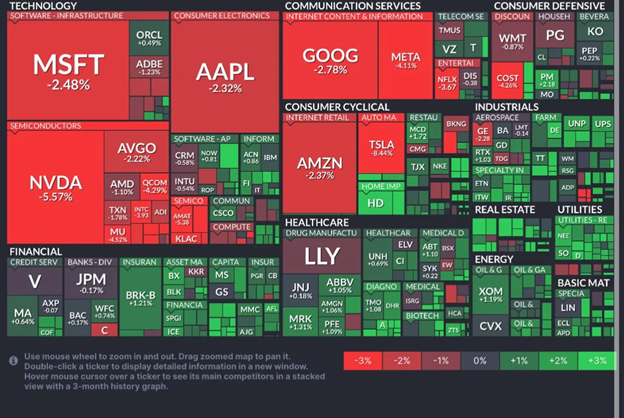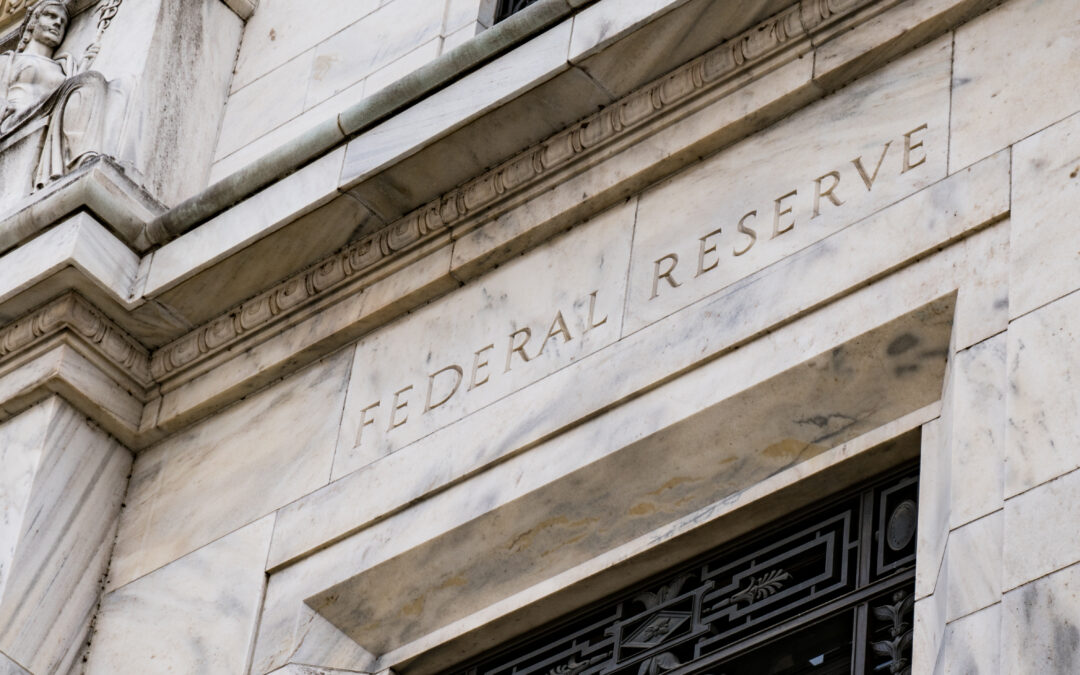Money & Markets Daily: The 5
It’s impossible to keep up with everything going on in financial markets and the economy these days. That’s where The 5, a new feature for Money & Markets Daily, comes in…
Let’s start your week off right by exploring the most significant trends and opportunities you need to know now.
1. Jerome Powell’s Fed Has Conquered Inflation
Federal Reserve Chair Jerome Powell took markets “through the looking glass” in 2022 when he embarked on the fastest rate hike cycle since the early 1980s.
Much like the legendary Paul Volcker, Powell took a hardline approach to fighting inflation. And we’re already seeing signs of his success. On Thursday, the updated Consumer Price Index (CPI) showed that inflation had sunk to its lowest levels since 2021.
Prices actually fell on a basket of consumer goods for the first time since the start of the pandemic. That’s welcome news for every household in America. And to quote Powell himself, it’s a clear sign that America is “back on a disinflationary path.”
This is a critical breakthrough in the fight against inflation. Experts predict Powell will now begin cutting rates very soon — before the end of this summer.
And that’s already having serious ripple effects across numerous markets…
2. Treasurys Plunge as Inflation Cools
Thursday’s CPI news had an instant impact on fixed-income markets, where investors have been piling into Treasury bonds to protect their cash from inflation.
Almost immediately after the news hit the wire, 10-year Treasury bonds plunged:

It’s important to note that Treasury bonds (particularly the 10-year) have shown an exceptionally strong performance through 2024 so far. And based on over 60 years of historical research, they’re expected to pull back even further by year-end.
3. “Magnificent Seven” Stocks Felt the Blow Too
You might expect sinking interest rates to be great news for stocks … but not for the mega-cap tech stocks that make up the Magnificent Seven (Microsoft, Apple, Amazon, Nvidia, Google, Meta/Facebook and Tesla).
Thursday saw the second-largest collective loss in market capitalization for the group ever. By the closing bell, these seven stocks were down a grand total of $535 billion altogether:

We’ve been writing about the Magnificent Seven pretty extensively here at Money & Markets Daily, so we’re not surprised to see some profit-taking in these clearly overstretched stocks.
But … if the money’s suddenly draining out of fixed-income … and out of mega-cap stocks … then where’s it all going?
4. This Year’s Newest Breakout Investment
“Interest rate cuts are like rocket fuel for small-cap stocks,” our Chief Investment Strategist, Adam O’Dell, explains. “These smaller companies thrive when they’re able to borrow at more affordable rates. Higher rates obviously bottleneck that growth.”
With five different rate cuts now projected to happen before April 2025, investors are already diving into small caps.
As Adam explained to paid-up subscribers in this week’s 10X Stocks update, the Russell 2000 small-cap index is currently showing an Advance/Decline Ratio (ADR) of 15-to-1.
That means 15 stocks in the Russell 2000 are currently trading higher for every small cap that’s trading lower!
And even within Adam’s 10X Stocks model portfolio, numerous small-cap stocks have started to take off. Since Thursday, his subscribers have seen certain stocks within the model portfolio gain 6% … 12% … and 13%…
Click here to see how you can join before this rotation into small-cap stocks potentially hits another gear.
5. Dueling Fed Chairs This Friday
If you ever have trouble falling asleep at night, we recommend reading the transcript from a Fed meeting.
You’ll be sound asleep before the second mention of “monetary policy.”
But despite being densely diplomatic, this Friday’s statements from the heads of the New York and Atlanta Fed are going to be critically important.
Wall Street will be listening for “dovish” language hinting at rate cuts or “hawkish” language indicating the central bank might stay the course.
The Fed’s leadership realizes that perception is a powerful tool — perhaps more powerful than the reality of their interest rate policy. So, they’ll recognize this Friday’s statements as a critical opportunity to control expectations.
We should do ourselves a favor and pay close attention. Check out next week’s edition of “The 5” for what those statements mean for you as an investor as 2024 rolls on.
— Money & Markets Team




